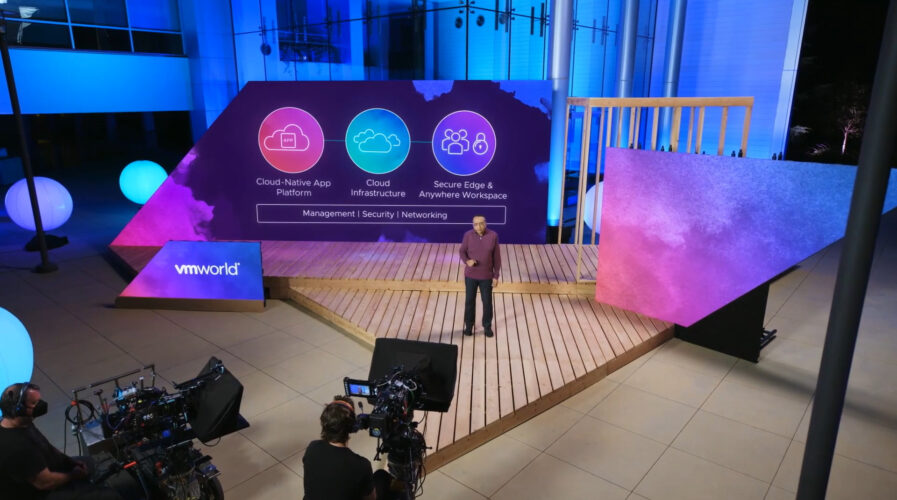
(Source – VMware)
Simplifying multi-cloud computing and data centers for businesses
While the Covid-19 pandemic accelerated the demand for flexibilities in cloud computing and data centers to speed up digital transformation for businesses, picking the right technology can often be quite a challenge.
For most businesses that have workloads on-premise, remote working required them to have access to their data centers or the private cloud.
As such, some companies opted for a hybrid cloud approach, whereby they relied on both private and public clouds for different applications and workloads. As the public cloud enables greater flexibility in terms of costs and scalability, companies began using more than one public cloud.
With organizations now driven by the urgency to go fast and digitize, the multi-cloud is now the model for digital businesses seeking to achieve rapid transformation.
Navigating multi-cloud computing and data centers
VMware recently announced new advancements for VMware Cloud, reportedly the industry’s first and only multi-cloud computing infrastructure that enables customers to move their enterprise apps to the cloud in nearly half the time and less than half the cost.
When it comes to cloud computing and data centers, integrating them can be a challenge, depending on the requirements of each provider. The same applies to multi-cloud as well. Each cloud provider has its unique tools and capabilities that can be challenging when it comes to integrating them.
For app modernization, 91% of executives surveyed by VMware agree that their major app initiative in 2021 is to migrate and modernize legacy apps. It is also expected that 20% of average growth of modern apps across cloud and data center by 2024, surpassing traditional apps.

(Source – VMware)
Integrating multi-cloud computing and data centers
According to Raghu Raghuram, CEO of VMware, VMware Cross-Cloud services provide a new set of integrated services that help customers achieve accelerated journey to the cloud; cost efficiency; flexibility, and control across any cloud.
At the same time though, Raghu agreed that integrating with each cloud can be challenging.
“We are doing the heavy lifting to make sure they have the services they need so that they can operate across whichever cloud environment that meets their needs. If you just look at what we have done with VMware Cloud – we now have the VMware Cloud infrastructure and operations stack running in every major hyperscale cloud worldwide,” added Raghu.
While he acknowledges that integrating is not as easy as it seems, he believes VMware is succeeding in enabling it.
According to the company, VMware Cloud runs as a native service in 100+ regions spanning all public clouds — Amazon Web Services (AWS), Azure, Google Cloud, IBM Cloud, and Oracle Cloud— as well as 4,000+ partner clouds, in private data centers, and at the edge.
Furthermore, VMware Cloud gives customers the flexibility to move to the cloud on their timelines and run vSphere workloads on the cloud of their choice.
Project Arctic
Currently, VMware’s cloud computing virtualization platform uses vSphere — although it will soon turn into Project Arctic. It includes an updated vCenter Configuration Manager, as well as vCenter Application Discovery Manager, and the ability of vMotion to move more than one virtual machine at a time from one host server to another.
Project Arctic natively integrates cloud connectivity into vSphere and establishes hybrid cloud as the default operating model. Customers will be able to take advantage of unlimited cloud capacity on-demand and instantly access VMware Cross-Cloud services through vCenter.
Project Arctic will allow businesses to:
- Upgrade their infrastructure to as-a-service
- Expand capacity on-demand
- Leverage VMware Cross-Cloud services
“The whole idea of Project Arctic is to make it simple for cloud computing and data centers. For example, developers can go into vCenter and see a cluster of servers in their own data center, and if they wanted to expand and add additional capacity, they can easily click that cluster and it on the cloud in that environment. We want to make intuitive for them within their known environment” said Mark Lohmeyer, senior vice president and general manager, cloud infrastructure business group, VMware.
As businesses adopt more cloud services to run their applications, being able to work on them with seamless integration is key to ensure businesses can meet growing customer demands quickly and efficiently.
READ MORE
- Safer Automation: How Sophic and Firmus Succeeded in Malaysia with MDEC’s Support
- Privilege granted, not gained: Intelligent authorization for enhanced infrastructure productivity
- Low-Code produces the Proof-of-Possibilities
- New Wearables Enable Staff to Work Faster and Safer
- Experts weigh in on Oracle’s departure from adland


